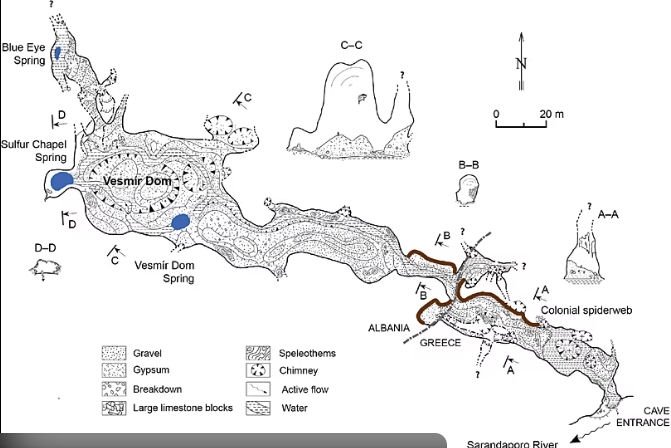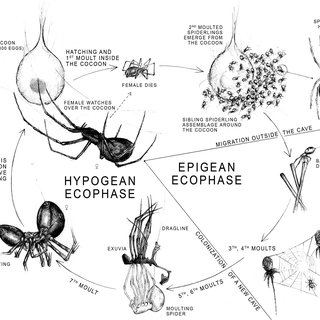
Scientists Find Spider Web the Size of an Apartment: Scientists have recently unearthed an extraordinary natural marvel deep in Europe—a spider web sprawling the size of an entire apartment, measuring over 106 square meters (about 1,140 square feet), nestled inside the sulfur cave that straddles the Albania-Greece border. Home to an estimated 111,000 spiders, this massive communal web challenges everything we understood about spider behavior, ecosystem adaptability, and the limits of nature’s engineering prowess. It’s a discovery so astounding that you truly have to see it to believe it.
Table of Contents
Scientists Find Spider Web the Size of an Apartment
The discovery of the largest spider web in Europe, roughly the size of an apartment and home to over 111,000 spiders, reveals an incredible chapter in nature’s story of resilience and adaptation. This spider megacity thriving in one of Earth’s most hostile environments—a sulfurous, pitch-black cave—reshapes our understanding of spider behavior and ecology. It offers a rare glimpse into survival strategies, species cooperation, and unique underground ecosystems. Beyond the awe factor, this discovery serves as a powerful reminder of the vast wonders still hidden in our world.
| Aspect | Description |
|---|---|
| Location | Sulfur Cave, Albania-Greece border |
| Size | Approximately 106 square meters (~1,140 sq ft) |
| Number of Spiders | Estimated 111,000 spiders in one web colony |
| Spider Species | Barn funnel weaver (Tegenaria domestica) and sheet/dwarf weaver (Prinerigone vagans) |
| Unique Behavior | First documented cooperative colonial behavior between two solitary species |
| Scientific Importance | Largest spider web colony; insights into ecology and species adaptation |
The Discovery: Scientists Find Spider Web the Size of an Apartment
The Sulfur Cave, discovered in 2022 by speleologists from the Czech Speleological Society, has revealed a spider colony unlike any ever documented. Stretching across an area larger than a typical US apartment or half a tennis court—with over 111,000 spiders living collectively—this “spider megacity” sits suspended inside a narrow, low-ceilinged passage, deep within the pitch-black, sulfur-scented cave.
This sulfurous cave, carved by the oxidation of hydrogen sulfide gas reacting with groundwater to produce sulfuric acid, is a hostile environment. It’s filled with noxious hydrogen sulfide gas—the same stuff that smells like rotten eggs and can be deadly to most animals. Still, life has found a way here. The spiders thrive in total darkness, sustained indirectly through a unique food chain starting from sulfur-oxidizing microbes, which feed cave midges that later provide prey for the massive spider colony.
Dr. Bina Vzi, a leading biologist from the University of Tirana, describes the experience entering the cave as “pure adrenaline for biologists” given the chest-high water, low light, and dangerous gases. Despite these challenges, her team meticulously studied the web, discovering thousands of smaller funnel-shaped webs woven together into one gigantic communal network shimmering under the light as if dotted with thousands of tiny lights.
Two Spider Species: Enemies Turned Roommates
What sets this discovery apart is the unlikely cooperation between two spider species that are normally solitary and antagonistic: the barn funnel weaver (Tegenaria domestica) and the sheet or dwarf weaver spider (Prinerigone vagans). Typically, barn funnel weavers prey on the smaller P. vagans, and these spiders avoid one another in most natural settings.
Inside Sulfur Cave, however, complete darkness seemingly disrupts their usual behaviors. Dr. Vzi’s team proposes that without sight, the spiders do not recognize each other as threats, allowing them to coexist peacefully in an incredibly dense communal web structure.
DNA analysis of the cave spiders further revealed they are genetically distinct from their surface-dwelling relatives, indicating long-term adaptation to this cave’s unique conditions—a perfect example of how isolation molds species evolution.
Understanding the Science: Why This Discovery Matters
This spider web megacity is groundbreaking in several scientific aspects:
- First documented case of colonial cooperative behavior in these two solitary spider species. Such social cooperation is extremely uncommon among spiders, opening new windows into arachnid behavioral ecology.
- Adaptation to extreme environments. Sulfur Cave’s toxic atmosphere and eternal darkness make it one of the planet’s most inhospitable habitats, yet life thrives on a complex food web beginning with sulfur-oxidizing bacteria.
- Unique cave ecosystem revelations. The midges that feed on these bacteria are the primary food source for the spiders, illustrating intricate ecological dependencies seldom observed.
- Potential applications in material science. Spider silk’s incredible strength and flexibility have inspired innovations in engineering and biomedicine. Understanding these spiders’ communal web-building could inspire new materials and designs.
- Biodiversity and conservation insights. Highlighting how fragile and unique cave ecosystems are, this discovery underscores the need for protective measures due to the vulnerability of such specialized habitats.

The Harsh Habitat: Life Inside Sulfur Cave
Sulfur Cave is no ordinary ecosystem. Its formation results from the chemical oxidation of hydrogen sulfide gas, yielding sulfuric acid that slowly etched the limestone to form the cave. Inside, temperatures maintain a steady 80°F, but the air is laden with dense hydrogen sulfide gas, presenting significant challenges for life.
Scientists had to wear wet suits and protective gear to navigate chest-high waters and toxic fumes to reach the web. Despite these conditions, the cave hosts a surprisingly rich ecosystem. Sulfur-oxidizing microbes thrive here, feeding aquatic insects like midges. These midges hatch in cave pools and serve as the primary prey caught in the spider webs—a perfect example of a chemoautotrophic-based food chain, which relies on chemical energy instead of sunlight.
The dense population of over 2.4 million midges ensures a steady food supply for the spiders, allowing the colony to sustain its enormous size and remarkable biodiversity.
How These Spiders Build a Giant Web?
This enormous web is a mosaic of thousands of individual funnel-shaped webs intricately woven together to form one vast, communal network. The structure hangs like a gigantic silken curtain along the cave walls, catching millions of tiny insects every day.
The spiders demonstrate an impressive ability to work in tandem, collaboratively maintaining this massive structure, harvesting prey, and living in close quarters without conflict. This level of social cooperation is unprecedented in these species and highlights nature’s surprising strategies for survival.
Broader Implications: What We Can Learn
This spider megacity offers fascinating scientific and educational takeaways:
- It exemplifies that even predators can demonstrate cooperative behavior under certain environmental pressures.
- The unique food web reminds us that ecosystems exist beyond sunlight, fueled by chemical energy pathways critical to understanding global biodiversity.
- Insights into such extreme ecosystems may aid conservationists in protecting unique habitats threatened by human activity or climate change.
- Spider silk remains a model for biomimicry; understanding communal silk production might fuel advances in materials engineering.
- For educators and nature enthusiasts, this serves as an engaging case study to inspire curiosity about biodiversity, adaptation, and ecological interconnectedness.

NASA on Alert: 3I/ATLAS Interstellar Visitor Sends Shockwaves Through the Space Community
Say Goodbye to Metal Plates: New “Bone Glue” Can Heal Fractures in 3 Minutes
SpaceX Starship Megarocket Hits Key Milestones Before Stunning Splashdown












